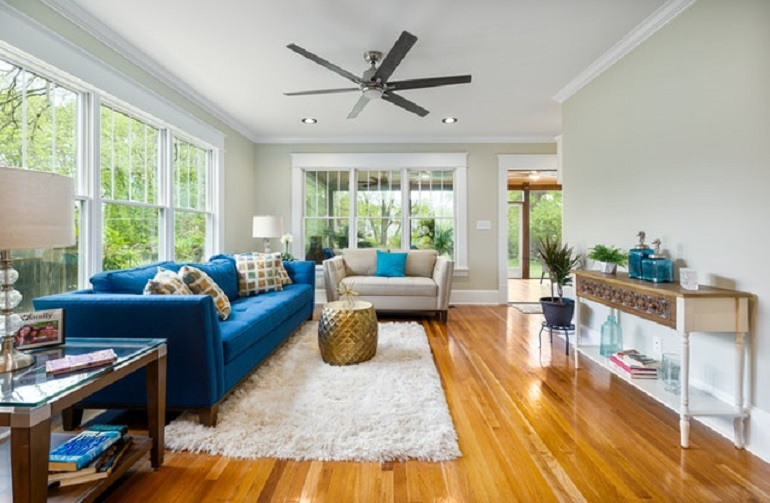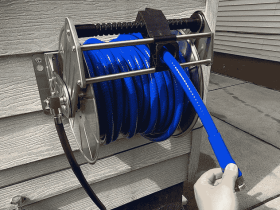A ceiling fan is a great way to keep your home comfortable year-round while saving money on heating and cooling costs. When you run a ceiling fan in the summer, you can turn your thermostat up by as much as four degrees Fahrenheit and still feel perfectly cool and comfortable. But those four degrees can make a huge difference to your energy bill.
But choosing the right ceiling fan for your home can be complicated. What size and style of fan do you need in your home? It depends on so many factors, including your decor, the size of the room where you plan to hang the fan, whether you’re hanging the fan outdoors, and, if so, how much it will be exposed to the elements. Read on for the answers to all your questions about choosing a ceiling fan.
Consider Your Decor
The days of your grandma’s old wicker ceiling fans are long past. These days, ceiling fans are available in a range of styles, so you can choose one that blends in with your decor. Are you going for a minimalist vibe in your home? Choose a sleek, modern two-blade fan design in wood or metal. Do you have a coastal theme going on? Choose a tropical style fan with leaf-shaped blades. You can even get brightly colored fans or industrial-look fans. Match them to your decor by choosing a hardware finish that matches the rest of the hardware in your home. If you buy a wood or wood-look fan, choose the one that most closely matches the dominant wood type in your furniture and trim.
Choose the Right Fan Size for Your Space
Fans come in sizes ranging from 29 inches to 80 inches wide or larger. The size of a ceiling fan is the size of its sweep, or the diameter of the entire fan from the tip of one blade to the tip of the corresponding blade, on a fan with an even number of blades. On a fan with an odd number of blades, the measurement is taken from the tip of one blade to the middle of the fan motor. That number is then doubled to arrive at the full sweep.
To choose the right size fan for your space, measure the size of your room. For the smallest rooms of less than 50 square feet, you should look at buying small ceiling fans no larger than 29 inches. For rooms, 51 to 75 square feet, choose a 36-inch fan. For rooms, 76 to 100 square feet, choose a 42-inch fan. For rooms 101 to 225 square feet, choose a 52-inch fan. For rooms, 226 to 400 square feet, choose at least a 56-inch fan, if not larger. Rooms larger than 400 square feet can accommodate the largest fans.
Hang Your Fan at the Right Height
Hanging your fan at the right height will ensure its effectiveness while protecting your household from fan-related head injuries. Ideally, you want your fan to be eight to nine feet off the floor. If you have high ceilings, this will mean buying a downrod extension so you can lower the fan appropriately. If you have standard nine-foot ceilings, you can just use the 12-inch downrod that should come standard with most fans. If your ceiling is lower than nine feet, you can still have a ceiling fan, but you need to look at flush-mount models that hug the ceiling and don’t have a downrod.
Get a Wet-Rated Fan for Outdoors
Are you going to be hanging your ceiling fan outdoors, on a covered porch, or in a gazebo? Ceiling fans can really make a difference in outdoor spaces – they make a muggy day feel cooler and they can keep bugs away.
But not all ceiling fans are meant to be hung outdoors. Ceiling fans rated for indoor use can’t stand up to damp and wet conditions. Their motor housings are not watertight, and their blades may be made out of medium density fiberboard (MDF), a wood product that is not water-resistant. Make sure you get a fan rated for wet conditions if it will be fully exposed to the elements, or damp conditions if it will have some cover (such as under a covered porch). If you live on the coast, you need a marine-rated fan – it will still rust eventually, but not as quickly as a non-marine-rated fan.
Choosing a ceiling fan for your home is a real endeavor, but it’s one that’s well worth it. Your new ceiling fan will make your home so much more comfortable – and save you money on cooling and heating costs, too.











Leave a Review